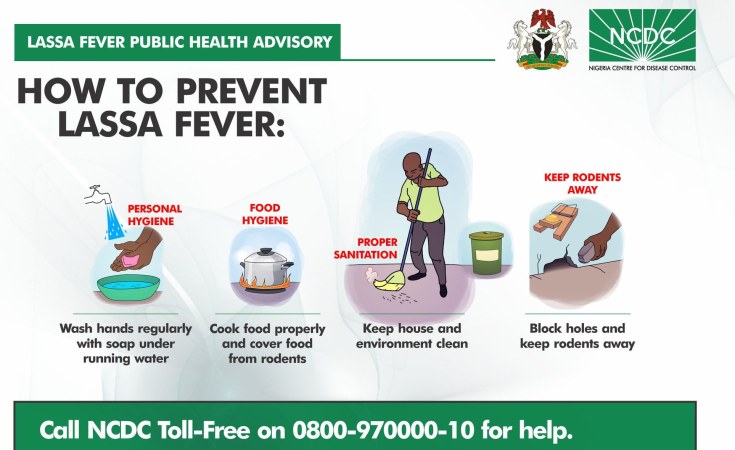NCDC noted that 28 states recorded at least one confirmed case across 121 Local Government Areas in 2023.
The Nigerian government has said the country recorded 1,227 confirmed cases and 219 deaths of Lassa Fever across 28 states from week one to 51 of 2023.
The data is contained in the latest report by the Nigerian Centre for Disease Control (NCDC).
The situation report published on the website of NCDC shows an increase in confirmed cases and fatalities recorded in 2023 when compared to 1,055 cases and 189 deaths recorded within the same period in 2022.
Cumulatively from week 1 to week 51, 2023, the report noted that 216 deaths were reported with a case fatality rate (CFR) of 17.5 per cent which is lower than the CFR for the same period in 2022 (17.9 per cent)
According to the report, the number of new confirmed cases in week 51 spanning 18 to 24 December, Lassa fever cases increased from 10 in the previous week to 26 cases.
The report also noted that the number of suspected cases in 2023 (8,978) increased compared to 2022 (8,130), adding that two health workers were affected in week 51.
More details
In total for 2023, NCDC noted that 28 states recorded at least one confirmed case across 121 Local Government Areas.
Of all confirmed Lassa fever cases. 77 per cent were reported from Ondo, Edo, and Bauchi states. While Ondo state accounted for 35 per cent, Edo and Bauchi recorded 28 and 14 per cent respectively.
According to the report, the most affected age group was 21-30 years, with cases ranging from one to 93 years, and the median age of confirmed cases was 32 years.
In response to the situation, NCDC said the multi-sectoral Public Health Emergency Operation Centres (PHEOC) have been activated at both the national level and in the affected states.
Challenges
Meanwhile, NCDC also highlighted the challenges in combating Lassa Fever cases in Nigeria, which include the late presentation of cases resulting in an elevated case fatality rate.
Others are poor health-seeking behaviour due to the high cost of treatment and clinical management of Lassa fever; poor environmental sanitation conditions observed in high-burden communities; and poor awareness observed in those high-burden communities
Additionally, challenges like poor environmental sanitation conditions and low awareness were also observed in high-burden communities.
Lassa fever
Lassa fever is an acute viral hemorrhagic (excessive bleeding) illness that is transmitted to humans through contact with food or household items contaminated by infected rodents or contaminated persons.
Its symptoms include fever, headache, sore throat, general body weakness, cough, nausea, vomiting, diarrhoea, muscle pains, chest pain, and in severe cases, unexplainable bleeding from ears, eyes, nose, mouth, and other body openings.


